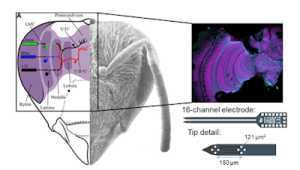Earth is in the middle of one of the largest biodiversity crises in history. Scientists not only have an obligation to document and understand the consequences of this loss, but also address these global changes with new and sustainable solutions. However, this research requires large quantities of data on how the genetic, taxonomic and functional composition of communities is changing over space and time. For example, accurately observing and understanding climate change-induced latitudinal shifts in species distributions may require collecting data across thousands of kilometers. Citizen science has been proposed as a mechanism to gather large volumes of spatio-temporally extensive biodiversity data while simultaneously integrating public outreach into research. Consequently, there has been a proliferation of citizen science programs and similar partnerships between scientists and non-scientists; however, the efficacy of these programs in quantifying biodiversity has not been evaluated.
In our paper “Global Change and Local Solutions: Tapping the unrealized potential of citizen science for biodiversity research” we focus on this critical question facing biodiversity research in the 21st century: can the ballooning global human population be harnessed to effectively contribute to biodiversity research, and specifically to conservation and global change impacts?
To answer this question we used seven citizen science web-based clearinghouses (together listing more than 500 programs) to create a single database of biodiversity citizen science programs. We considered only programs that focus on biodiversity (defined as documenting the occurrence of taxonomically identified organisms across space and time) and incorporate scientific inquiry (defined as collecting quantifiable information related to a specific issue or question). Thus, in our paper, we provide the first comprehensive and quantitative review of the extent, efficacy, and quality of biodiversity citizen science data.
Within the projects we sampled, 1.3 million volunteers participate in biodiversity monitoring, contributing $1.5 billion in-kind annually. We show that the explosive growth in citizen science matches or exceeds scientific interest in biodiversity and global change drivers and shows no signs of declining. Current projects target all vertebrate classes, five major invertebrate phyla, diverse plant families, bacteria, fungi, and even protozoa. We demonstrate that a majority of citizen science projects have a larger spatial extent and higher longevity than most ecological research projects; and that one third have data that are readily available, verifiable, and collected via a standardized, written protocol. Despite these indications of rigor and relevance to biodiversity science, only 12% of projects had Web of Science searchable publications. We conclude that biodiversity science must embrace citizen science as a viable means of data collection, or risk alienating the public that we, as scientists, seek to educate and inform.
 |
| The seven citizen science clearinghouses we searched to create the single database we used in our analysis. |
The paper is co-authored by bio-grads Elli. Theobald*, Lauren DeBey, former bio-grad Ailene Ettinger*, and Hillary Burgess, Natalie Footen, Halley Froehlich, Cherie Wagner, Janneke HilleRisLambers, Josh Tewksbury, Melanie Harsch, and Julia Parrish. (*indicates equal contribution)
Check out our whole paper here.




